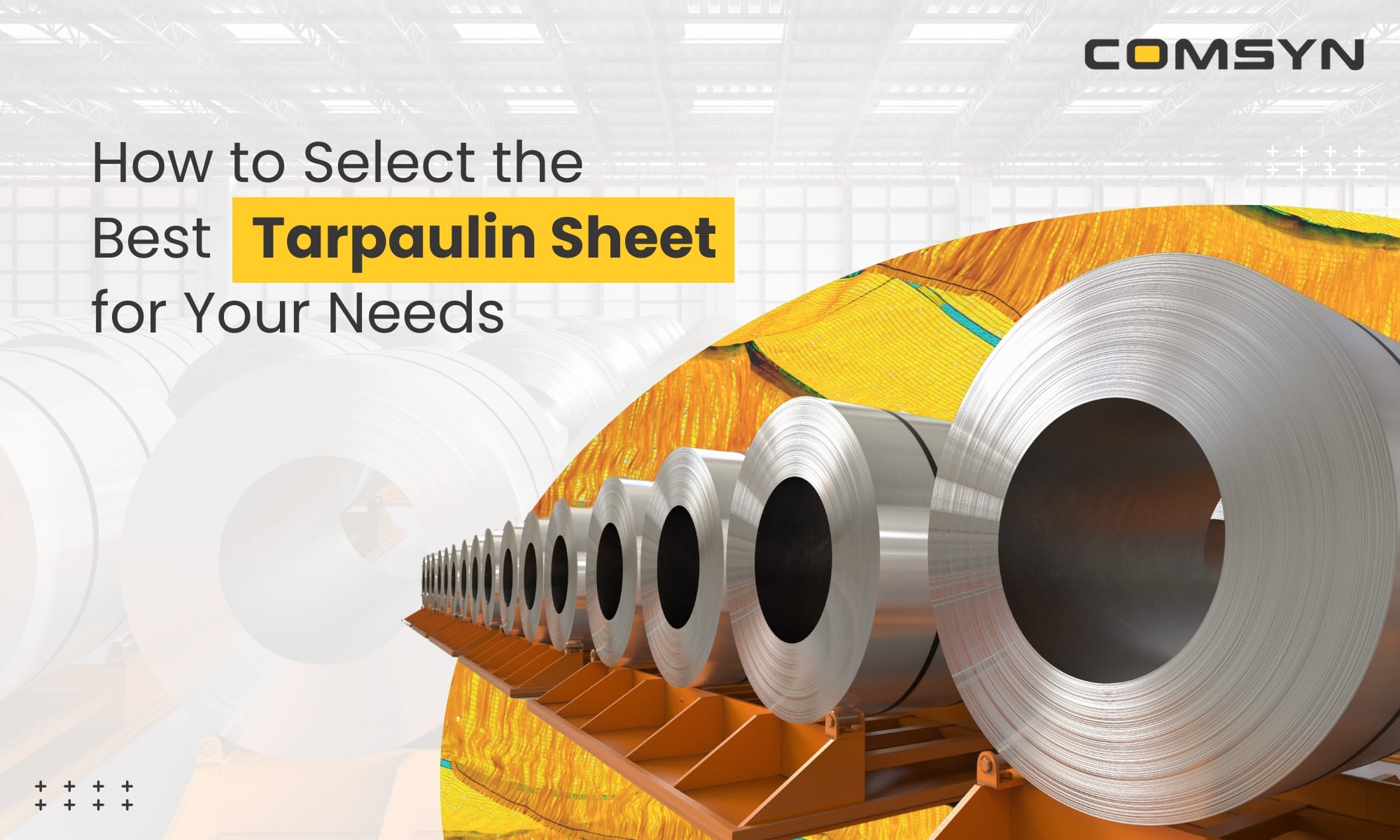When selecting a tarpaulin sheet, it’s crucial to consider factors such as material, size, thickness, color, and specific features that match your needs. Let’s delve into these aspects to help you make an informed decision. Tarpaulin sheets are made from various materials, each offering different benefits: Tarpaulins come in various colors, and the choice of color can affect their performance and suitability for different tasks: There are several types of tarpaulins available, each designed for specific uses: Tarpaulins are used in a wide range of applications, including: To ensure you choose a high-quality tarpaulin, consider the following aspects: A crucial feature of any tarpaulin is its ability to resist water and withstand weather conditions. Waterproof tarpaulins are essential for outdoor use, ensuring that the covered items remain dry and protected from rain and moisture. Weather-resistant tarps also protect against wind, snow, and UV rays, making them versatile for various outdoor applications. UV protection is vital for tarpaulins used in sunny environments. UV-resistant tarps prevent degradation from sun exposure, extending the tarp’s life and maintaining its protective qualities. This feature is particularly important for tarps used in agriculture, construction, and outdoor storage, where prolonged exposure to sunlight can cause material weakening and failure. Some tarpaulins come with special features designed for specific applications: Choosing the best tarpaulin sheet requires careful consideration of various factors, including material, size, color, and specific features. By understanding these elements, you can select a tarp that meets your needs and provides reliable protection. For high-quality tarpaulins, consider Comsyn, a trusted tarpaulin manufacturer offering a wide range of tarps for sale to suit every requirement. Our products are designed to deliver exceptional performance, whether you need a tarp for industrial use, agriculture, or recreational activities. Contact us today to learn more about our tarpaulin sizes and prices, and find the perfect tarp for your needs.How to Select the Best Tarpaulin Sheet for Your Needs?

Selecting the right tarpaulin sheet for your needs can be challenging given the variety of options available. Tarpaulins, commonly known as tarps, are versatile and used in numerous applications, from covering goods to providing shelter. This guide will help you understand the key factors to consider when choosing the best tarpaulin sheet for your specific requirements. Whether you need a tarp for industrial purposes, agricultural use, or recreational activities, understanding the different types of tarpaulins and their features is essential.Important Factors in Choosing the Ideal Tarpaulin Sheet for Your Needs
Materials Used in Tarpaulins
Color Options for Tarpaulins
Different Types of Tarpaulins
Common Applications of Tarpaulins
Evaluating Tarpaulin Quality
Waterproof and Weather-Resistant Tarpaulins
UV Protection in Tarpaulins
Special Features for Specific Uses
Conclusion
FAQs
The best quality tarpaulin depends on the intended use. For general use, a heavy-duty PVC or PE tarpaulin with reinforced seams and UV protection is ideal. These tarps provide durability and long-lasting protection in various conditions.
Check the material strength, seam construction, grommet placement, and coating quality. High-quality tarpaulins will have strong, durable materials, well-constructed seams, and rust-resistant grommets. Additionally, inspecting the overall finish and any manufacturer certifications can give you insights into the tarp’s quality.
The best thickness depends on the application. For heavy-duty use, a thickness of at least 10 mils is recommended. For light-duty applications, 5-7 mils may suffice. Thicker tarps provide better durability and resistance to wear and tear, making them suitable for more demanding tasks.
A higher GSM (grams per square meter) indicates a thicker and more durable tarpaulin. For heavy-duty use, a GSM of 200 or higher is preferable, while 120-150 GSM is suitable for general use. Higher GSM tarps are more robust and can withstand harsher conditions, ensuring long-term protection.
Tarpaulins are graded based on their material and intended use, such as light-duty, medium-duty, heavy-duty, and industrial-grade. Each grade offers different levels of durability and resistance, with industrial-grade tarps providing the highest level of protection.
Measure the dimensions of the area or object you need to cover, adding extra length and width to account for fastening and securing the tarp. It’s important to ensure that the tarp will fully cover the intended area, including any allowances for overlap and tie-down points.
A waterproof tarpaulin sheet is designed to prevent water from penetrating through the material, keeping the covered items dry and protected from moisture and rain. Waterproof tarps are essential for outdoor use, ensuring reliable protection in wet conditions.
- About Us
- Products
- Markets Served
-
- Investor Relation
- Board Of Directors
- Committees Of Board
- Corporate Governance
- Financials
- Annual Report
- Key Managerial Positions
- Shareholding Pattern
- Notices
- Policies Programme
- Announcements
- Statement of Investor Complaints
- Unpaid & Unclaimed Dividend
- Prospectus
- Investors Contact
- Subsidiary Financials
- IEPF
- Preferential Issue – 2024
- MOA & AOA
- Integrated Filing
- Sustainability
- Contact Us
- TechTex
- Brochure

